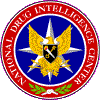
|
National
Drug Intelligence Center Houston High Intensity Drug Trafficking Area Drug Market Analysis June 2007 Drug-Related CrimeHigh levels of violent and property crime in Houston are often associated with the distribution and abuse of illicit drugs, particularly crack cocaine and methamphetamine. Crack cocaine is the drug most associated with violent and property crime. Gangs and other crack distributors commonly commit assaults, carjackings, drive-by shootings, home invasions, robberies, and firearms violations to protect and expand their drug operations. In addition, crack cocaine abusers often commit property crimes such as burglary to support their addictions. Methamphetamine abuse is often associated with violent and property crime in Houston; these crimes may escalate as methamphetamine abuse increases. Violent crime increased in Houston from 2005 to 2006. According to the Federal Bureau of Investigation Uniform Crime Report, violent crime increased from 23,987 in 2005 to 24,250 in 2006. (See Table 5.) According to law enforcement officials, much of the increase in crime in Houston has been caused by the displacement of street gangs and drug traffickers from New Orleans after Hurricane Katrina. The New Orleans gangs are extremely violent and intimidate many of the established Houston gangs. As such, gang-related crime, particularly gang-related murders, has increased significantly. Additionally, New Orleans gangs have expressed intent to take over large portions of the Houston drug market, which could lead to further violence.
AbuseIllicit drug abuse in Houston occurs at high levels because of a relatively large abuser population and a constant supply of illicit drugs transported into the city from areas in proximity to the U.S.-Mexico border. According to Texas Department of State Health Services (DSHS) data, drug-related treatment admissions have increased 38 percent from 2002 through 2005, the latest data available. Some of this increase can be attributed to Hurricanes Katrina and Rita evacuees who entered treatment programs during the last 4 months of 2005. Amphetamine/methamphetamine, powder and crack cocaine, and marijuana-related treatment admissions have all increased since 2002. Amphetamine/methamphetamine admissions more than doubled from 2002 (77) to 2005 (165). Crack cocaine-related treatment admissions increased slightly from 2002 (1,889) to 2005 (1,897); however, powder cocaine-related treatment admissions more than doubled from 357 to 799 during the same period.4 Marijuana-related treatment admissions increased 70 percent from 2002 (1,331) to 2005 (2,274). Drug-related deaths increased from 2003 to 2005. According to the Harris County Medical Examiner's Office, overall drug intoxication deaths increased from 2003 (153) to 2005 (309), the latest data available. Drug intoxication deaths where cocaine was found as a single drug increased by 59 percent from 2003 (69) to 2005 (110).5 Additionally, drug intoxication deaths where heroin was found as a single drug more than doubled from 2002 (5) to 2005 (11). End Notes4. Treatment mentions throughout this report include
adult and youth admissions. |
||||||||||||||||||||